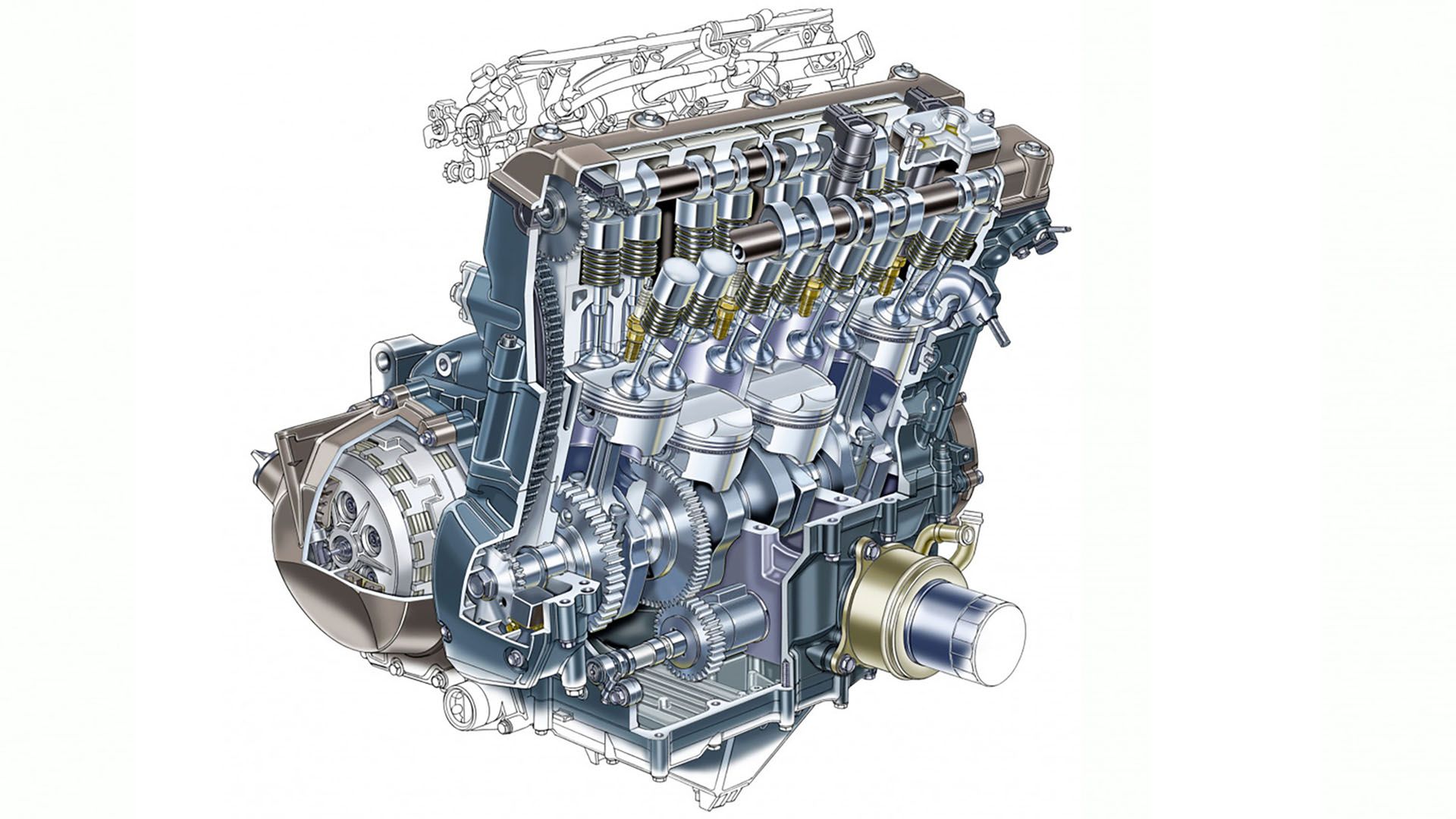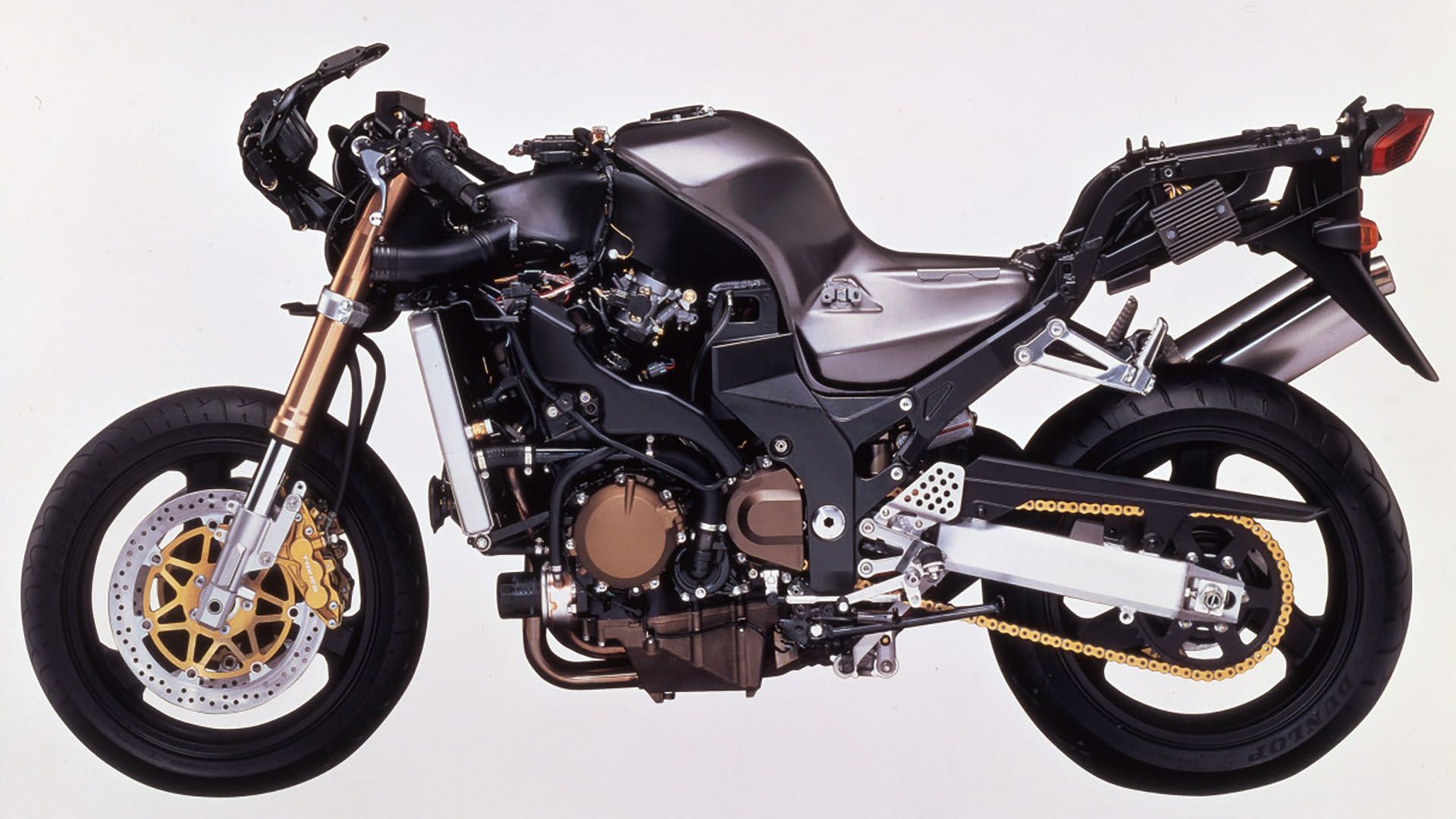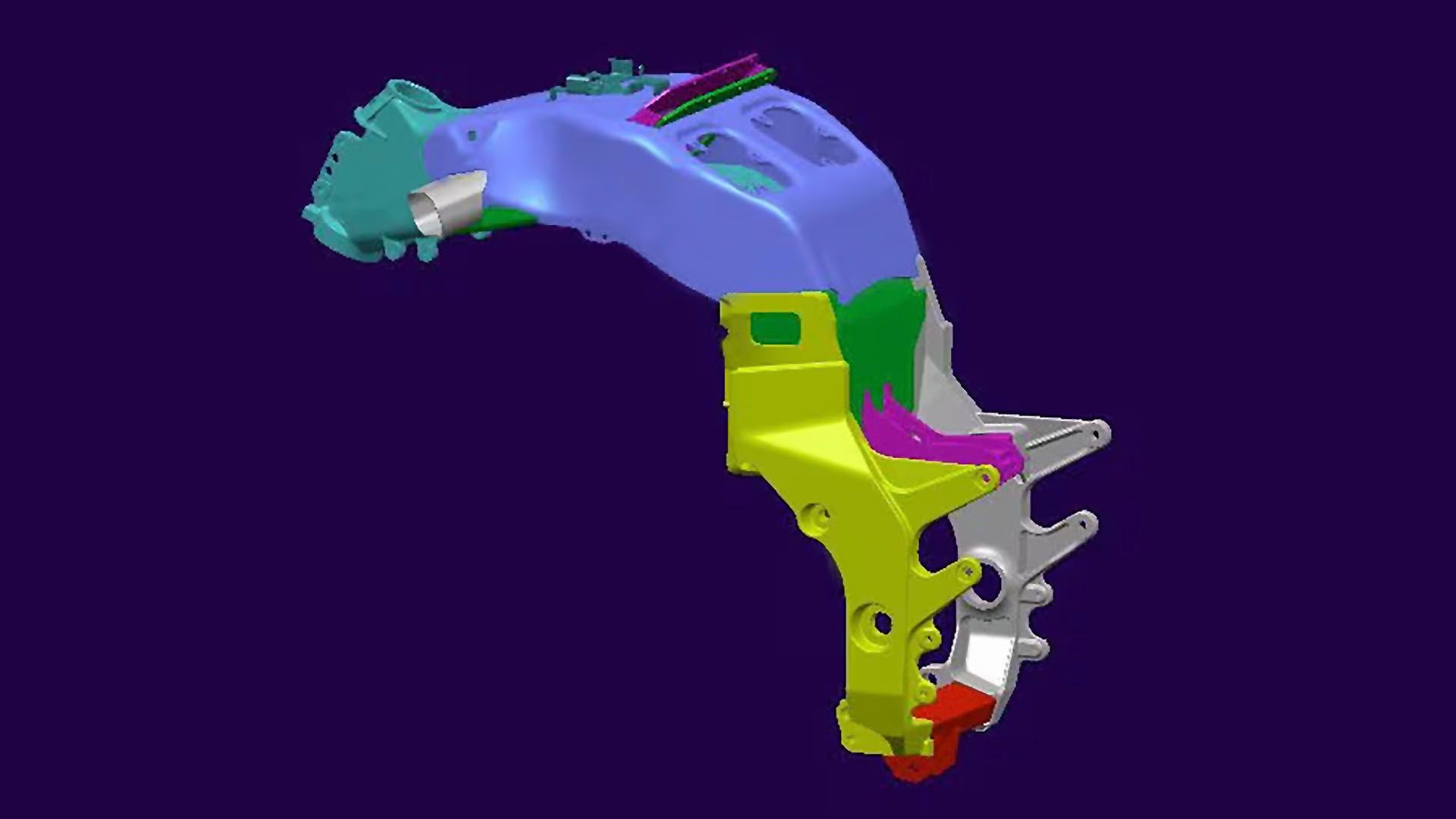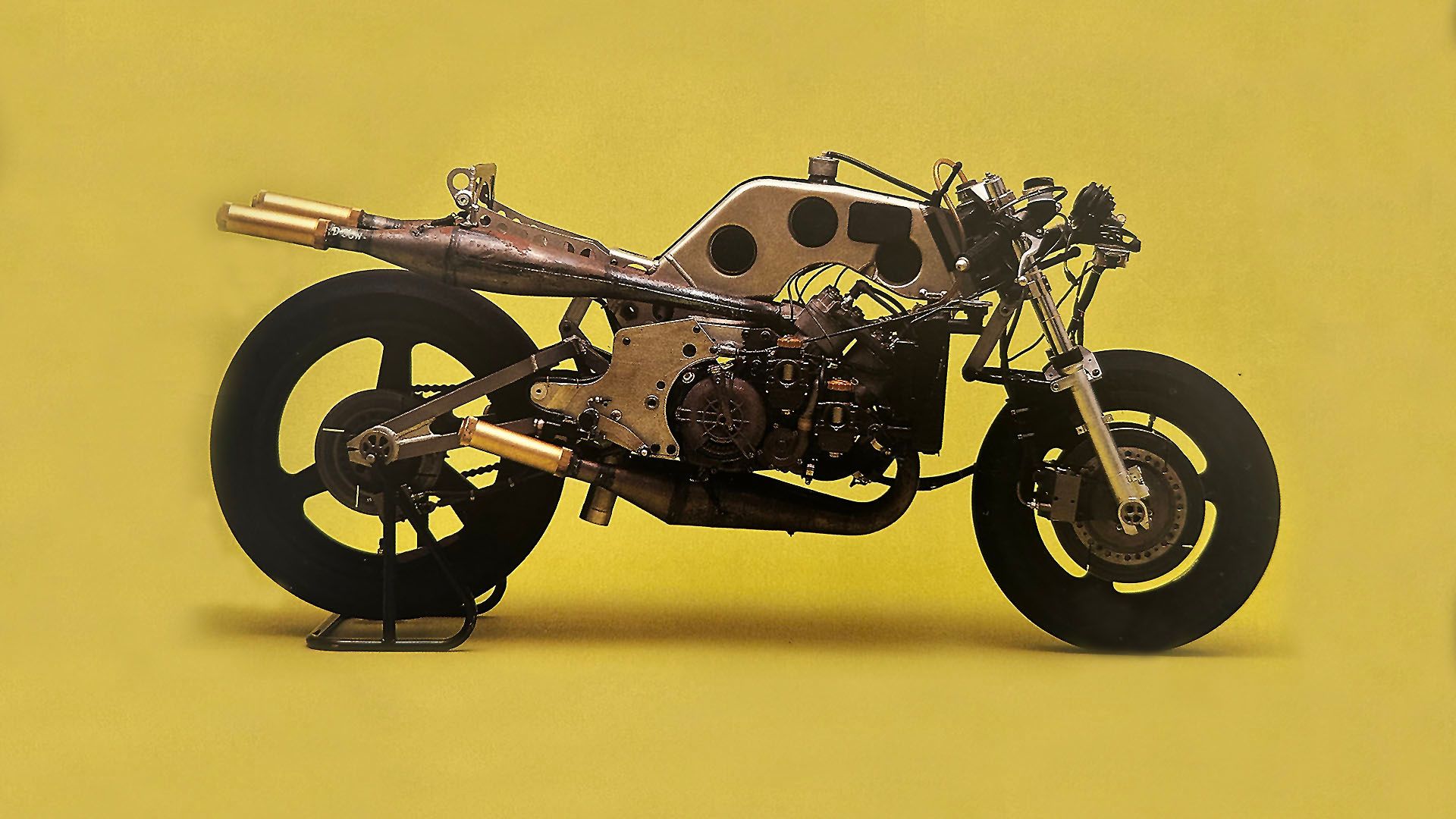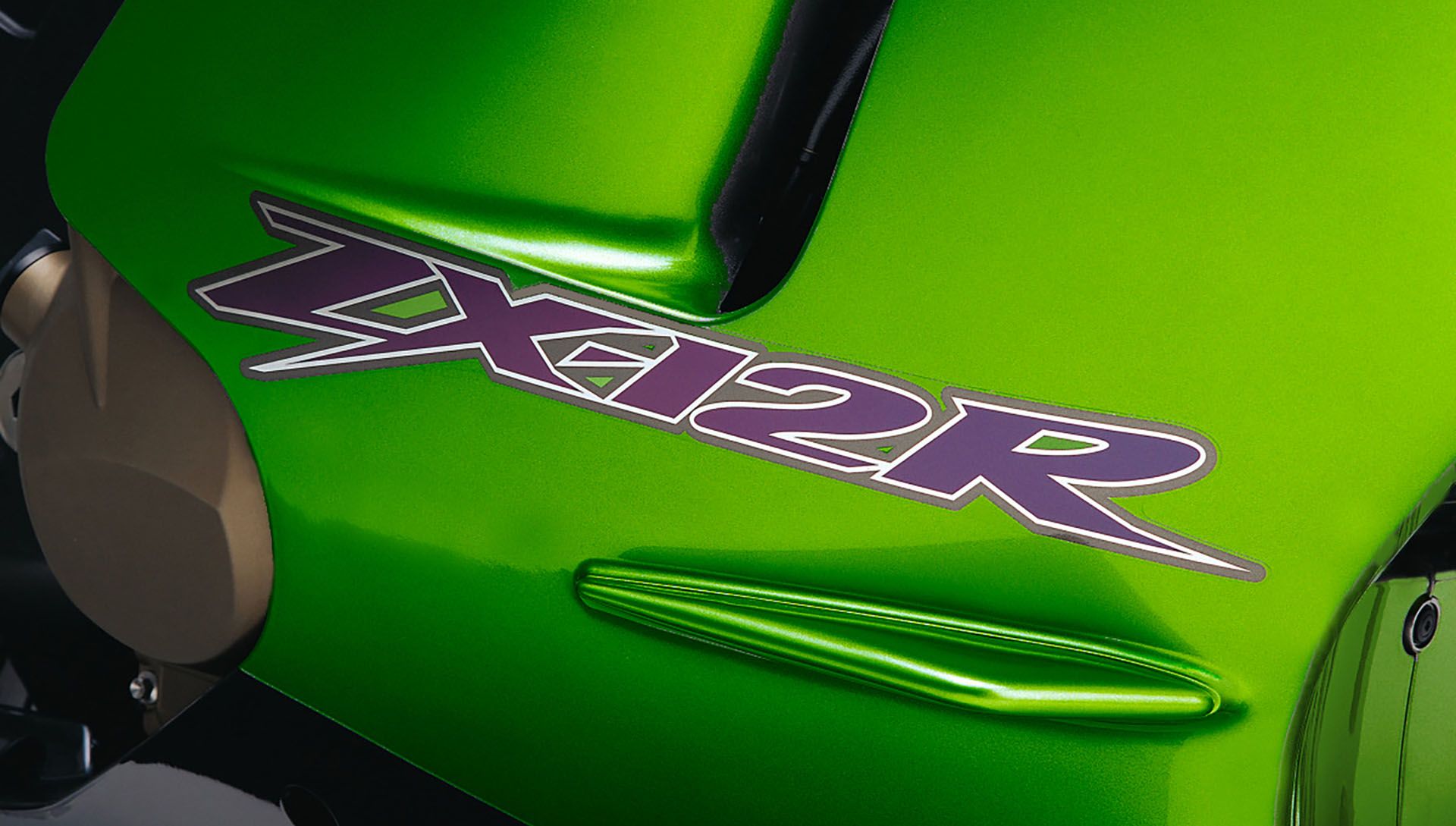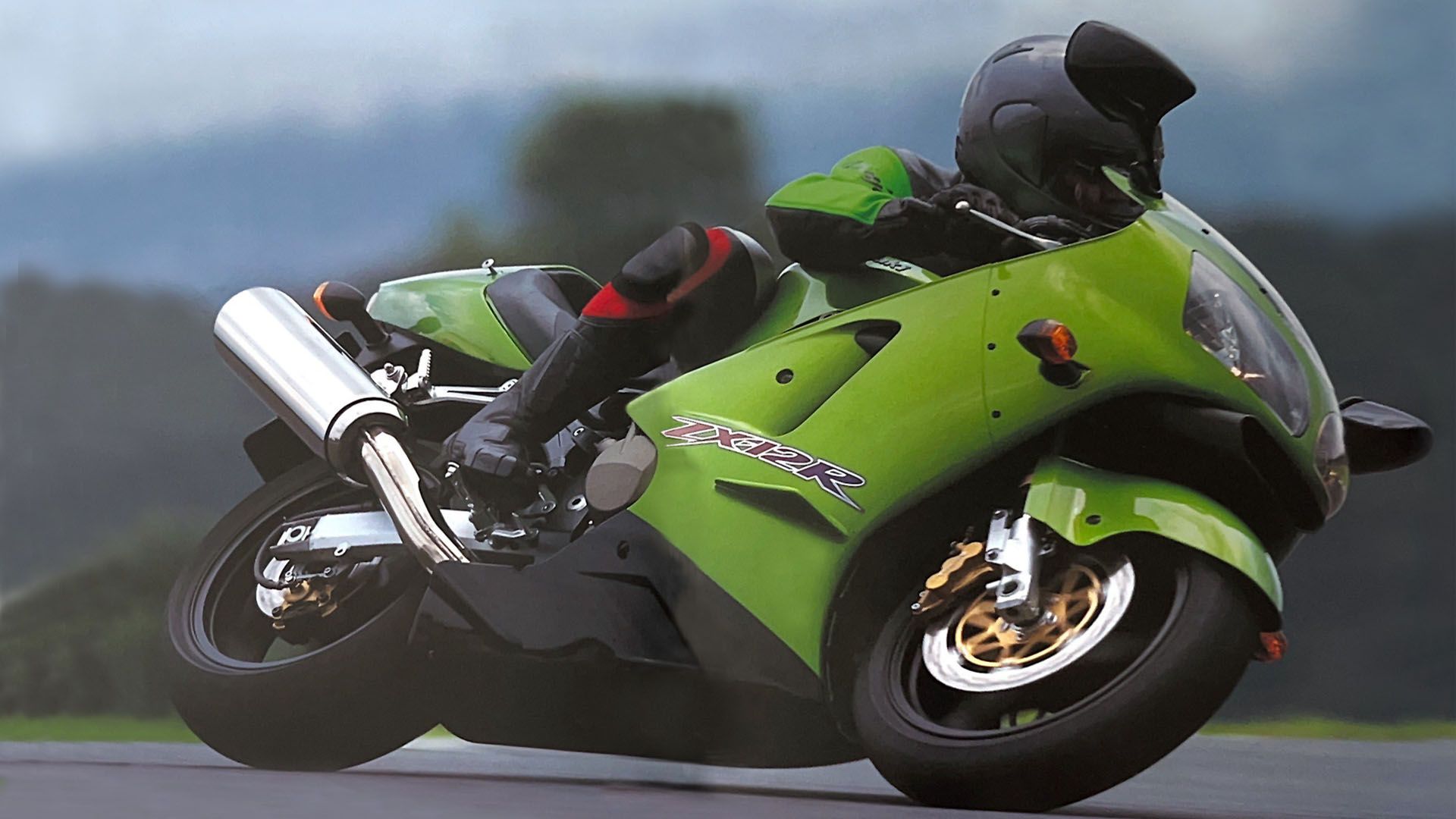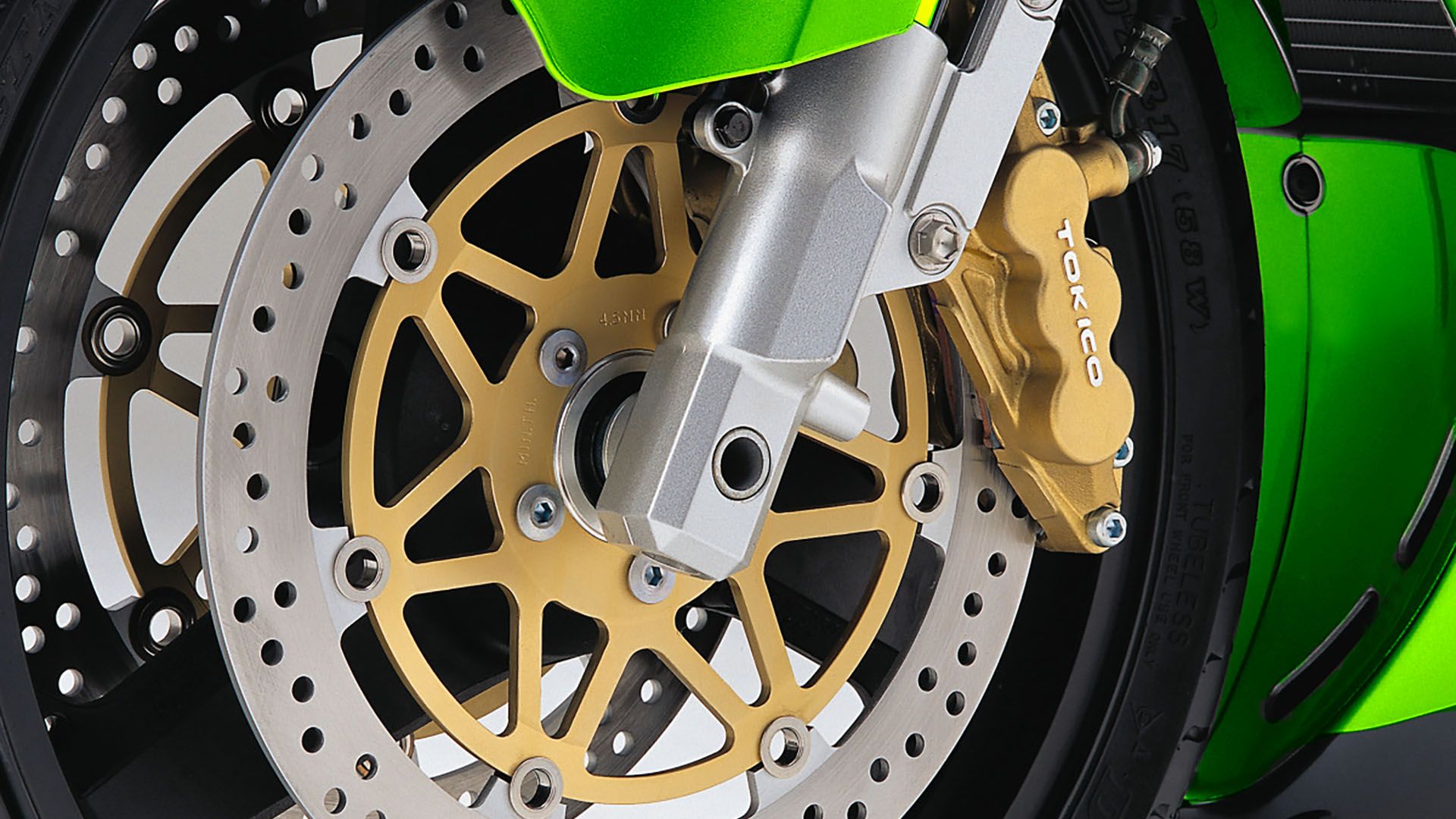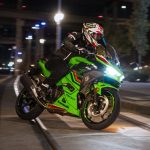[ad_1]
Summary
- Kawasaki’s ZX-12R was the world’s fastest motorcycle until political pressure led to its restriction to 186 mph.
- The ZX-12R’s cutting-edge engineering included an aluminum monocoque chassis and advanced powerplant.
- Despite being overshadowed by the Hayabusa, the ZX-12R remains an iconic and powerful sports bike option.
Kawasaki might have been the last of the Japanese Four to enter the motorcycle industry, but they had a strong background in engineering. This gave them an edge in motorcycle manufacturing, evident from the outset with models such as the Mach III, Z1, and the Ninja ZX-11. When the latter was introduced in 1990, it was a game changer in the world of superbikes, continuing on the path of the 1984 GPz900R. With some mind-blowing horsepower and a top speed of 174 mph, it was the fastest motorcycle in the world that money could buy, leaving the competition in its wake.
Kawasaki’s primary objective when developing the ZX-11 was clear: horsepower and speed, with everything else being secondary. However, it eventually lost the title of the world’s fastest production motorcycle after six years to Honda’s Super Blackbird 1100XX. Then, in 1999, Suzuki shocked the world with the GSX-R1300 Hayabusa. Despite being ugly and purposely so, it hit a top speed of 194 miles per hour. Kawasaki, known not to sit around, had to do something to counter Suzuki and Honda’s assault. And that’s what unfolded.
Team Green wanted the ZX-11’s successor to be more than a new model, employing technologies that either didn’t exist earlier or had to be developed. The objectives were straightforward: to keep the motorcycle’s dry weight less than 215 kg (474 lbs), the engine should have at least 175 horsepower without ram air, handling should be nimble, and the design unmistakably Kawasaki. Nailing all those, the ZX-12R sprung to life.
In order to give you the most up-to-date and accurate information possible, the data used to compile this article was sourced from Kawasaki, Cycle World, and www.motorcyclespecs.co.za
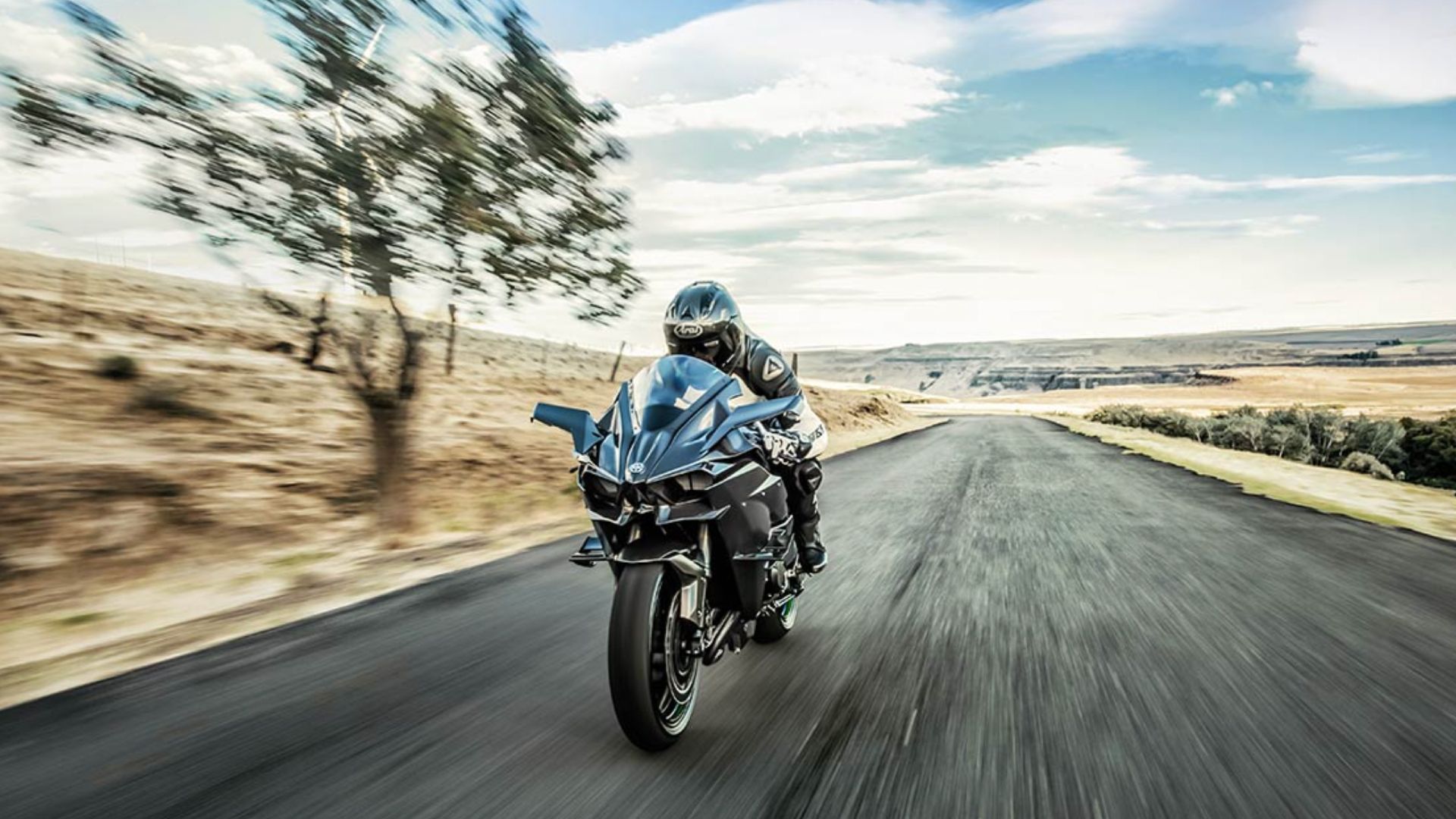
Why The Kawasaki Ninja H2R Stands Alone In The World Of Modern Superbikes
Supercharged, dialed to the extreme, and finished in silver: the ultimate hyperbike
The Mighty Powerplant
Kawasaki needed an output in the target area of at least 175 horsepower if the ZX-12R was going to reach close to 200 horsepower with ram air. The ZX-11 had achieved 147 horsepower and the company was looking at new territory; something that had not been done before. The ZX-12R’s 1,199cc powerplant had the same bore and stroke ratio as the ZX-6R and the ZX-9R at the time. By using a specific formula (Kawasaki’s special), bore size determined the given displacement, which determined the valve size, while valve size determined the camshaft design. The company’s idea was to make the engine as compact as possible by adopting an all-new aluminum cylinder with sleeveless electro-plated bores. With no sleeves, the engine’s width reduced as did the space between the cylinders. This dissipated heat extremely well and also resulted in a shorter crankshaft.
The engine’s overall length was just 8 mm longer than the ZX-9R and the weight was 26.5 pounds lighter than the Ninja ZX-11. Carburized connecting rods, forged pistons and a 12-plate clutch pack were used to ensure the ZX-12R could withstand long bursts of speed. The adoption of fuel injection over carburetion helped smooth out the power delivery, but more importantly, it eliminated speed-induced pressure differential issues in the ram air intake system. With a balancer shaft thrown in, the engine would be butter smooth in the upper rev range.
Because the exhaust ports tend to get extremely hot, focus was also given to the exhaust ports. Their development in particular started small in diameter, but once it was figured out, it was then cast. From there, the ports were incrementally increased until the desired shape and size were reached for final production. Next, almost two to three hundred iterations of a mold were developed to perfect things.
The same was done for the intake ports, though temporal concerns were not an issue. Getting the correct shape of the valve ports, compression ratio, exhaust system design, and ignition timing were what gave the ZX its character. But the results from hundreds and thousands of hours of engine testing on the rolling chassis couldn’t entirely be relied upon, so it was the critical feedback from the test riders that helped tune the four-cylinder engine to perfection.
Kawasaki Ninja ZX-12R Highlights
- The first production motorcycle to adopt an aluminum monocoque frame
- It has a four-into-two-into-one exhaust system featuring a catalyzer-based titanium muffler which helps eliminate unburned hydrocarbons for cleaner emissions
- The mirrors’ shapes were designed as such to reduce aerodynamic drag at high speeds
- The engine is powder-coated in black and highlighted by bronze magnesium covers at the clutch, stator, and front sprocket side.
Engine Specifications
|
Engine |
Four-stroke, liquid-cooled, inline-four, DOHC, 16 valves |
|
Displacement |
1,199cc |
|
Bore x Stroke |
83.0 mm x 55.4 mm |
|
Max Power |
178 HP @ 10,500 RPM (USA/CAN) |
|
Max Torque |
98.8 LBS-FT @ 7,500 RPM |
|
Compression Ratio |
12.2:1 |
|
Cooling System |
Liquid-cooled |
|
Carburetion |
DFI® (Digital Fuel Injection) |
The Aluminum Monocoque Chassis
When the Ninja ZX-11 was being developed, there were ideas of using a different type of chassis for it. The idea was conceptualized while the chassis designer was looking at the radical design of a KR500 toy model and a 1989 ZZR-1100’s air intake and airbox. It struck the designer that the airbox and intake could become the chassis that would house the air filter, which would help save space. The idea was shot down by the big wigs at Kawasaki, plus the technology to create the chassis may not have entirely existed at the time. Not to mention, the costs associated with manufacturing.
At the time of the ZX-12R, Kawasaki was still challenged as the technology to build the chassis did not entirely exist. Although they had built the KR500 monocoque a little over four decades ago, the engineers wondered whether it could still be achieved. Though they had improved the 1981 KR500’s chassis to be stiffer and lighter, it was still too heavy compared to the competition. New manufacturing technologies had to be created.
Through trial and error, the ZX-12R’s chassis began to come together, fabricated from a combination of castings and sheet-metal stamping under pressure. The radiator well encapsulated within the monocoque above the exhaust headers allowed the front wheel to be pulled in further than usual. This resulted in a short wheelbase with a weight distribution of 51 percent at the front and 49 percent at the rear. The frame design surpassed the levels of chassis stiffness and strength associated with aluminum twin-beam frames.
Plus, looking at motorcycles from the nineties with twin-beam frames, they were wide, starting from just behind the head-stock area, angling out before ending at the sub-frame. This resulted in a decrease in steering angle, not to mention a wider and more bulbous front fairing than their counterparts. The ZX-12R’s all-aluminum monocoque chassis eliminated the perimeter beams (or spars) in favor of a large box section running over the top of the engine. The result was a narrower, more compact machine with a smaller frontal area than the perimeter chassis offerings, helping decrease the 12R’s drag coefficient to aid aerodynamics.
Finding the right chassis was also a combination of many different chassis’, tested on the bench and road. Different combinations of swingarms, upper yoke clamps, and front fork spring rates using different damping setups were also part of the process. Countless hours of testing, gathering, and sharing information between test riders and the engineers were taken into account and added to the bench testing data to help find the best possible setup before the ZX-12R went into final production. It had a pentagonal swingarm, in case you’re curious.
Looking at the ZX-12R without any bodywork and comparing it to the ZX-11, it was apparent where the differences lay. The conventionally located airbox housing was replaced by the ZX-12R’s monocoque chassis which also formed part of the airbox where two square air filters slide into slots adjacent to each other. The Star Trek Enterprise-shaped hinged fuel tank covered cast aluminum caps above the air filters recessed into the frame, and the tank sat between frame spars below the monocoque frame, at the beginning of the sub-frame. A screw-on faux plastic tank cover almost concealed the entire fuel tank, except for a part of the bottom exposed in plain sight just below the seat. Kawasaki’s current Ninja ZX-14R also uses a similar chassis.
Distinct, Sporty Styling
When the Hayabusa GSX-R1300 was being developed, Suzuki was after aerodynamics not good looks. The result from countless hours of wind-tunnel testing was a bulbous, yet slippery front cowling. But with Kawasaki’s prowess in aircraft engineering and manufacturing, developing the motorcycle’s aerodynamics wouldn’t be a problem. Kawasaki’s Aerospace engineers were involved in bringing about the ZX-12R’s final profile. The designers had plenty to think about, as there never had been a close integration between aerodynamics, chassis, and engine.
Clever ideas adopted during wind-tunnel testing like using oil drops on the fairing (a technique imparted by the aircraft engineers to the motorcycle engineers) taught them how to track the air-flow patterns left by the drops. The oil proved to be difficult to work with as it would stick to the fairing, so instead, Kawasaki engineers used dirty rainwater, a-la-Massimo-Tamburini-on-the-916 riding in the rain, which left a flow track quite well.
As a result, the small winglets on either side of the lower fairing acted as flow separators, ironing out the flow of turbulent air coming off from the front wheel area. In addition, you had small things like the cast-in wind deflectors on the bottom of the front forks. They played an important part in streamlining the aerodynamics and preventing drag by channeling the airflow around the lower fairing instead of toward the engine.
Perhaps the most noticeable part of the ZX-12R besides the Candy Lime Green Paint (if you’ve seen it in that color in its very first edition) is its ram air intake duct. It protrudes out just below the flush headlight in the upper fairing. The stylists wanted the duct to flush with the headlight in line with it. However, tests in the wind tunnel revealed that the pressure of air is at its maximum when the duct is located further forward. Thus came the final design we see here.
Handling
From a handling point of view, the ZX-12R is an improved super-supersports motorcycle when compared to the Suzuki GSX-R1300 Hayabusa. Its handling is agile despite its 513-pound heft, and the chassis feels incredibly light, which speaks volumes about its chassis and mass centralization. With an aggressive 23.5 degrees of rake, 3.7 inches of trail, (figures similar to 600cc supersports) and a short wheelbase, the motorcycle does not have to be muscled when the horsepower is on.
At slower speeds, the ZX-12R is a handful and a little wooden on the suspension front in traffic. But at higher velocities, it’s easy to steer through sweepers and remains extremely planted. The only thing to worry about when putting around is the lurchy throttle response from the fuel injection system at low revs, especially when transitioning from straights to going into corners on and off the gas. Early 2000 and 2001 models had this issue, but Team Green ironed out the issue to an extent in subsequent models from 2002 to 2006.
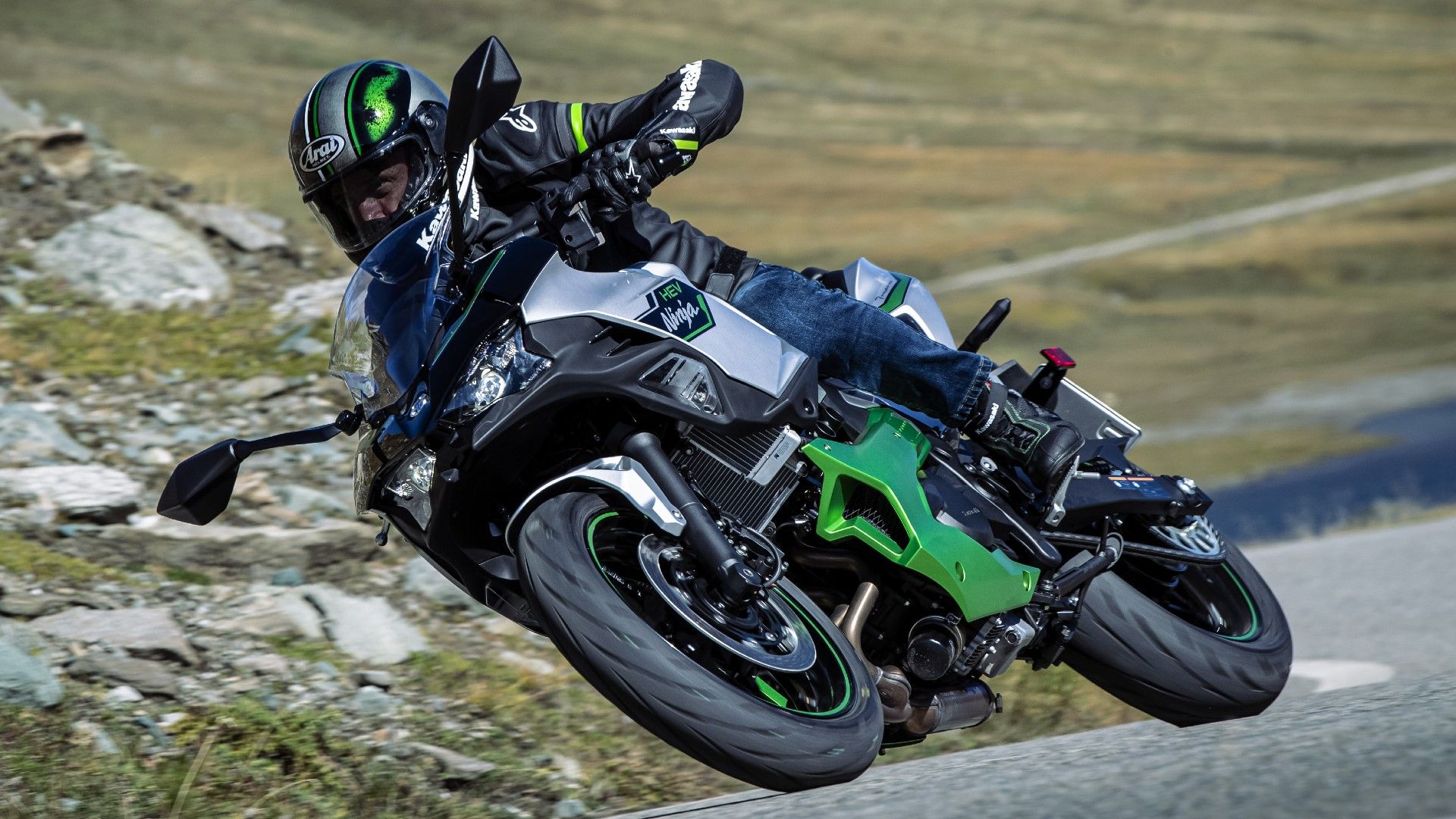
Why The Kawasaki Ninja 7 Hybrid Makes More Sense Than A Ninja 650 (And Why It Doesn’t)
We pit Kawasaki’s first-ever hybrid against its direct ICE counterpart to find out some key pros and cons
Going back to the beginning where it all began, Kawasaki representatives were excited, mentioning that the motorcycle had done 197 miles per hour in testing. There were also rumors that the pre-production version was putting out 220 horsepower at the rear wheel! Yet, unfortunately, the production version didn’t do any of those things. Political pressure from Europe forced Kawasaki to back-pedal into restricting the ZX-12R, questioning whether the world needed another hyper-crazy-300-plus machine.
This inevitably resulted in the Gentleman’s Agreement, a pact between major motorcycle manufacturers that would limit their motorcycles to 186 miles per hour. How Kawasaki restricted it is anyone’s guess. Was it through the engine control unit, the aerodynamics, gearing, or a combination of all three? We’ll never know unless you happen to know the correct sources at Kawasaki Heavy Industries. But this did hurt the bike’s image, which is why the ‘Busa remains the more popular offering, even though the 12R beat it (in internal tests).
Overall, the ZX-12R is very much worth buying even today. If you’re in the market looking to find an iconic sports bike that’s still fast enough for unlimited giggles, this is a great option. It still looks the part with a cowl thrown over the rear seat, and with a few simple modifications such as a Öhlins rear shock absorber, modifications to the final drive, and a reflash of the ECU to increase the RPM limit, you might smoke a Hayabusa or two, too!
Kawasaki Ninja ZX-12R Additional Specifications
|
Ignition |
Digital |
|
Transmission |
6-speed with Positive Neutral Finder |
|
Final Drive |
Sealed chain |
|
Front Suspension / Wheel Travel |
43 mm inverted cartridge fork adjustable for preload, 12-way rebound, and 12-way compression damping / 4.7 inches (120 mm) |
|
Rear Suspension / Wheel Travel |
Bottom-Link Uni Trak gas-charged shock, adjustable for preload, 18-way rebound, and 20-way compression damping / 5.3 inches (140 mm) |
|
Front Brakes |
Dual semi-floating 320 mm rotors with dual six-piston calipers |
|
Rear Brakes |
Single 230 mm rotor with opposed 2-piston caliper |
|
Rake / Trail |
23.5° / 4.1 inches (93 mm) |
|
Dimensions (L x W x H) |
82.1 in x 29.1 in x 47.2 in (2,080 mm x 725 mm x 1,185 mm) |
|
Wheelbase |
1,440 mm / 57.1 inches |
|
Seat Height |
810 mm / 32.3 inches |
|
Ground Clearance |
119 mm / 4.7 inches |
|
Dry Weight |
463 lbs/ 210 Kg |
|
Wet Weight |
246 lbs / 563 lbs |
|
Fuel Tank Capacity |
5 US gallons / 20 liters |
[ad_2]
Source link


